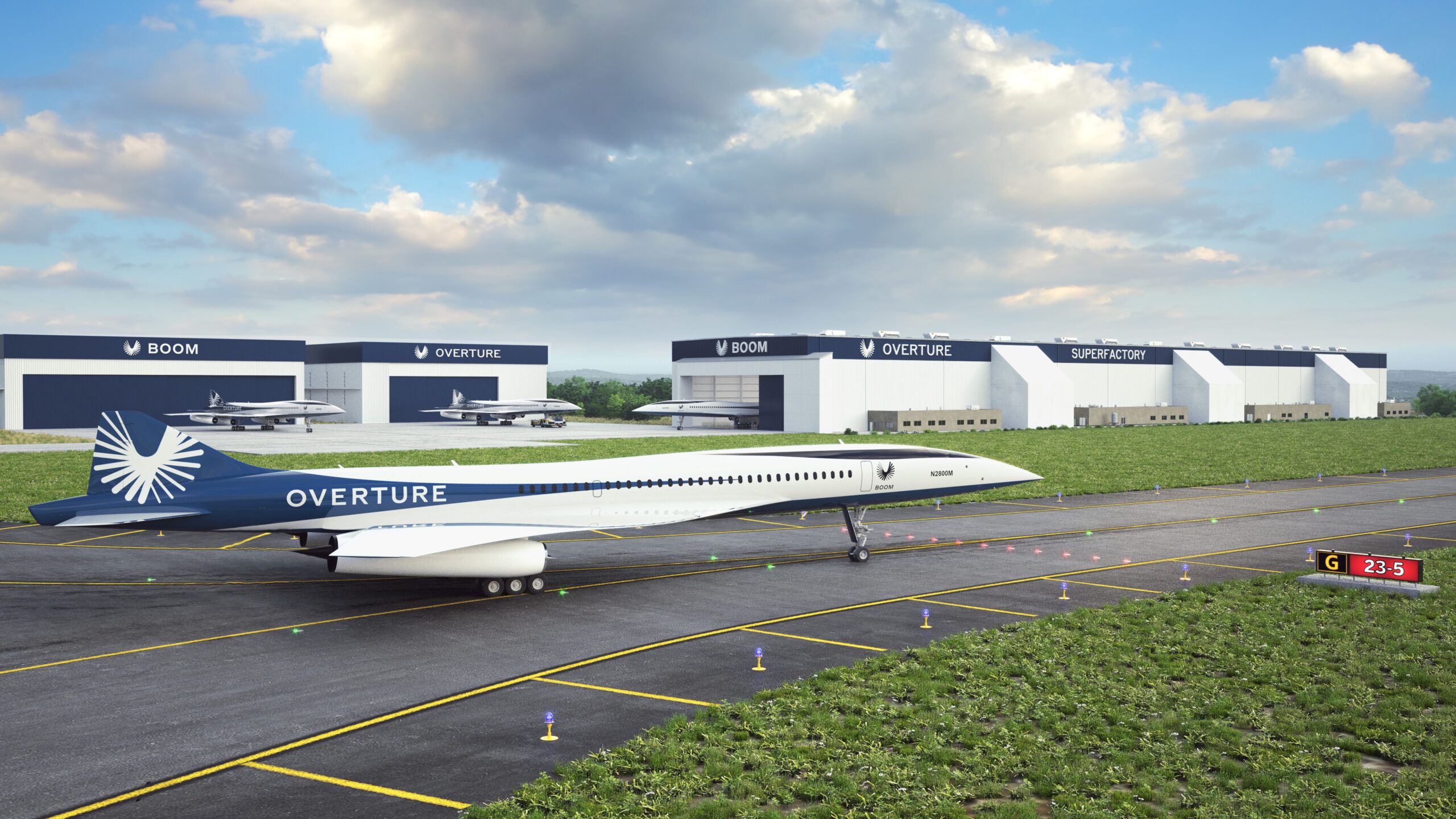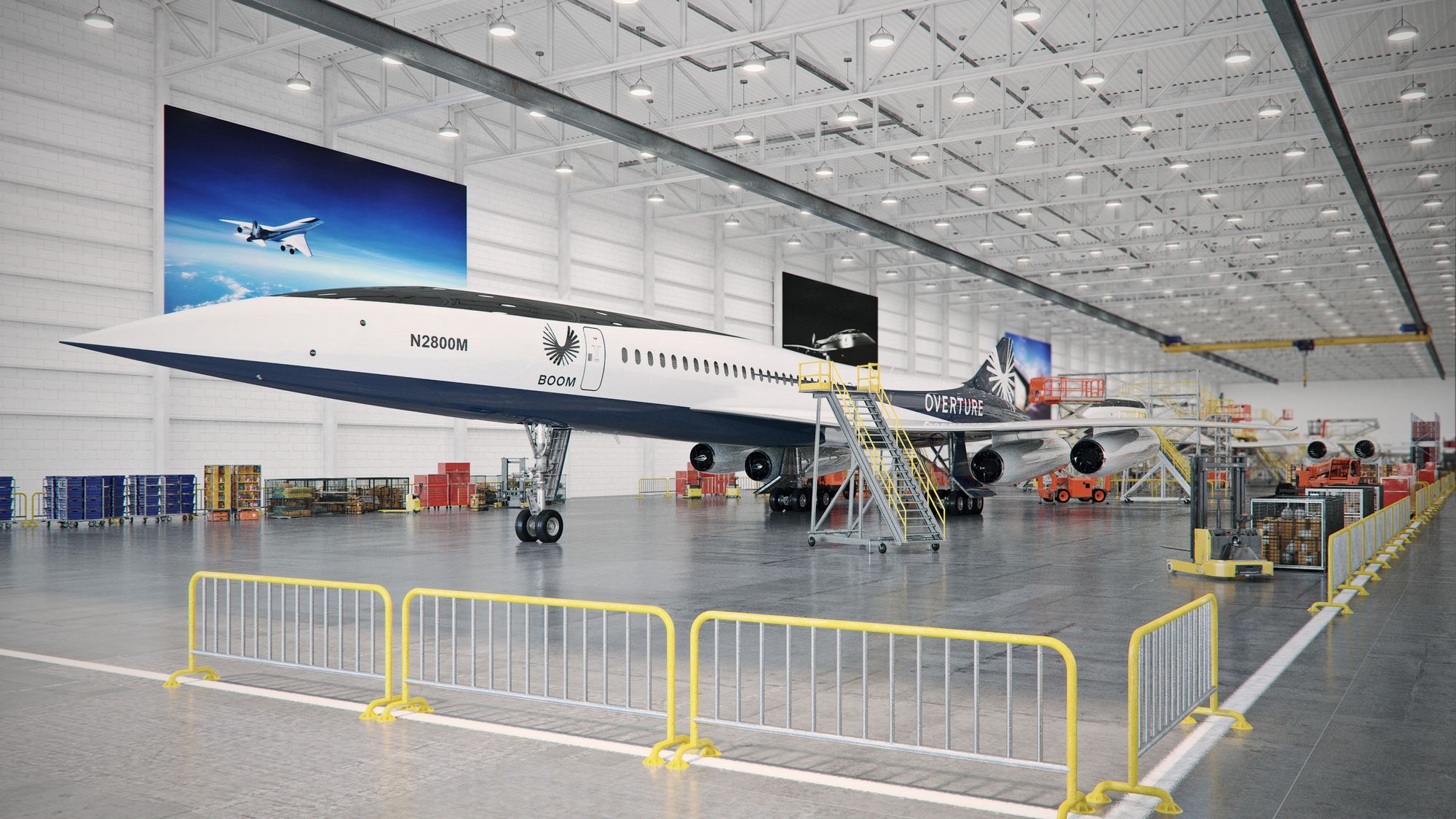Summary
- Boom Supersonic aims to reintroduce supersonic flight with its Overture aircraft by 2029, and its North Carolina Superfactory is a crucial step towards achieving this goal.
- The proximity of major aerospace and defense companies in North Carolina creates a collaborative environment that promotes innovation, attracts talent, and boosts economic growth.
- The Overture Superfactory will bring significant investment, create thousands of new jobs, and contribute billions to the state's economy, while also providing opportunities for internships and developing the next generation of supersonic professionals.
Boom Supersonic is looking to introduce its Overture aircraft as early as 2029. The company is intent on bringing supersonic flight back to the commercial realm for the first time since Concorde’s departure in 2003. Ahead of the plane’s service entry, the Colorado-based firm began constructing a 'Superfactory' in Greensboro, North Carolina, earlier this year.
Prime spot
The 400,000-sq-ft site at Piedmont Triad International Airport will host the Overture’s final assembly line, test facility, and customer delivery center. In an interview with Simple Flying, Christopher Chung, CEO of the Economic Development Partnership of North Carolina, highlighted that the location was chosen with air and ground space ready for development in mind.
Chung added that the area includes 65 acres for the company’s manufacturing needs. In addition to the size requirements, it offers easy connectivity to Interstates 85 and 40 and over 400 aerospace suppliers spread across the state. This point is essential to the operation. After all, the likes of Pratt & Whitney, Lockheed Martin, Honeywell, Collins Aerospace, and Spirit AeroSystems are all found in North Carolina. These companies are key names across the aircraft manufacturing and design spectrum.
Another outfit with facilities nearby is Northrop Grumman, which entered into a collaboration with Boom to provide military solutions. The alliance will see the introduction of a ‘special mission variant’ of the Overture.
Chung shared:
“Having major aerospace and defense companies like these clustered within a state like North Carolina can offer several benefits to both the companies and the local economy. This phenomenon of having a concentration of related businesses in a specific geographic area is often referred to as an ‘industry cluster,’ which allows for collaboration, supply chain efficiency, economic impact, further research and development, networking, knowledge spillover, and attraction for investments,
“The close proximity of these major players is a huge attraction for talent, as it creates a low-risk environment for those who move to the state. With more opportunities for career advancement, pivots and innovation, this cluster is a major reason why talented engineers and innovators move to North Carolina and stay, even if they change jobs.”
Social impact
Overall, having major aerospace and defense companies bound together can create a positive feedback loop of innovation, collaboration, and economic growth, benefiting both the companies and the local community. Notably, Boom’s project will bring an investment of more than $500 million through 2030, with the Overture Superfactory expected to create over 1,750 new jobs by 2030 and expand to a total of over 2,400 jobs by 2032.
Moreover, North Carolina economists estimate that the Overture Superfactory will grow the state’s economy by at least $32.3 billion over 20 years. Also, to develop the next generation of supersonic professionals, Boom will also create 200 internships through 2032 for students who attend publicly funded North Carolina universities, community colleges, or technical schools.
The right experience
North Carolina has had a long and rich history with aviation. It all began here, with the first-ever successful flight in 1903 by Orville and Wilbur Wright taking place in the state. It also was a major hub for research and training for aviation during both World Wars. The aviation and military prowess has left a legacy that is evident today, with seven military bases and 28 aviation and aerospace degree programs available at local education facilities.
All in all, North Carolina is home to more than 47,000 engineers, as well as the fourth largest active duty and reservist military population in the country, many of whom specialize in aerospace propulsion and ground equipment. It also has the largest manufacturing workforce in the Southeast at 470,000 strong.
With over 200 leading aerospace manufacturing companies spread across the state, companies can purchase equipment within a short drive from their facilities. Once they are ready to go to market, access to customers is made easy thanks to North Carolina’s prime location on the eastern seaboard. With four international airports, two deepwater seaports, and extensive railways and interstates, this unparalleled infrastructure can help accelerate a company’s growth.
Along with the closeness helping to increase efficiency and save money, there are cost reduction benefits across the board. As Chung explained:
“In North Carolina, there are incredible resources and access to talent with the lowest corporate income tax rate in the U.S. The current rate is 2.5 percent and will lower to zero by 2030. Here, state taxes are low, electricity is inexpensive, and aviation gasoline/jet fuel is exempt from state sales tax, meaning employees and employers can go further for less.”
Get all the latest aviation news right here on Simple Flying.
Overture will be capable of flying on 100% sustainable aviation fuel (SAF) at Mach 1.7, or 1,304 mph (2099.16 km/h). Powerhouses such as United Airlines, American Airlines, Japan Airlines, and the United States Air Force have all backed the program ahead of the 2029 service entry. The North Carolina factory will undoubtedly help Boom cover all angles before the highly-anticipated release.
What are your thoughts about Boom Supersonic’s Overture? What do you make of the prospects of the program? Let us know what you think in the comment section.


